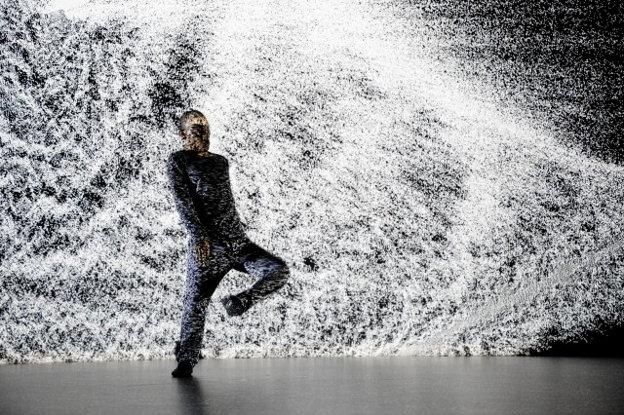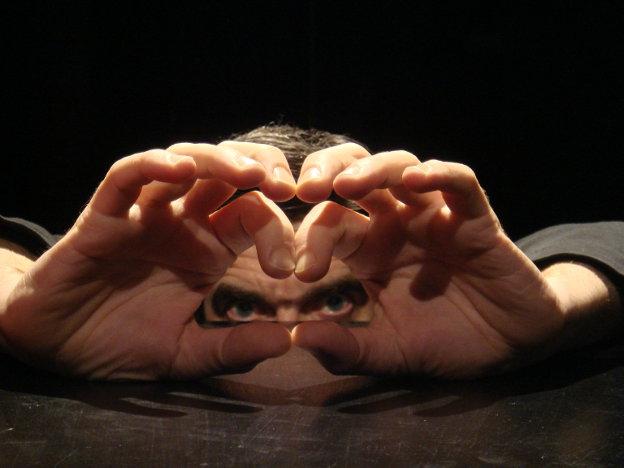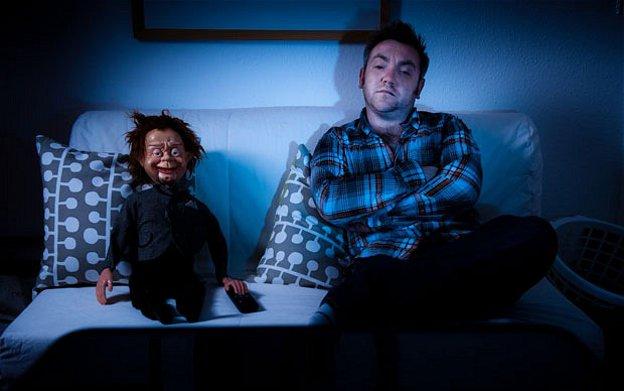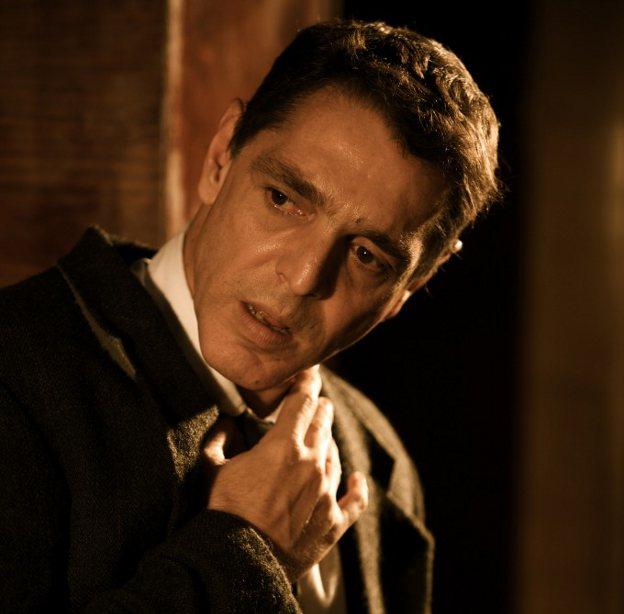A black box becomes a white box then fades to grey. A blue line appears across the centre, dissolves, then reappears stage front. Into the shadow comes a figure, in silhouette. Hiroaki begins to move, isolating limbs, electronic beats behind him. He seems to emit energy. In this new twenty minute piece, there is much to marvel at and savour. The technique, a mixture of Butoh and breakbeat is seamless; he is like a shape-shifter. At one point he holds a position with the heel of his left foot off the ground, as if mid-stride. I try this later myself – it is fiendishly difficult. Whilst watching, I realise that I don’t know what haptic means. Hiroaki says: ‘what I want is to transmit sensations, rather than messages, to the audience’. He does this, and the sensations are great. Haptic means non- verbal forms of communication, such as the Japanese custom of bowing and not touching. Hiroaki uses his body to touch us and the piece has some emotional drive to it; it is no way cold. At the end, the soundscape fades out and we hear his footsteps and breath in the dark. Through his incredible control, sense of rhythm, use of space and light and sound, he embeds Haptic into the communal memory.
Holistic Strata starts with a casual stroll on stage and a twist of neck, then boom! – all is plunged into blackout except for Hiroaki. He has become light, a TGI figure, morphing from human to something other. Planes shift as streaks of flashing light move across and perspective dissolves. It is a thirty minute assault of the senses. A woman in front of me audibly gasps a couple times as the effects become more extreme, the auditorium seeming to revolve at one point. In the centre of all this visual noise Hiroaki dances on, his form like liquid mercury. The sound becomes overwhelming and I would have liked more harmony or contrast, but as a spectacle it is very effective and the choreography is as compelling as in Haptic. There are echoes of Saburo Teshigawara, and I am reminded of Akram Khan’s combination of Kathak and contemporary dance. Hiroaki came quite late to dance, having studied as a photographer. He has certainly brought all his knowledge to this piece. Mesmerising stuff; and he didn’t leave the floor once.








